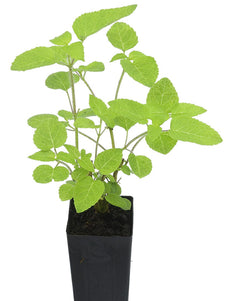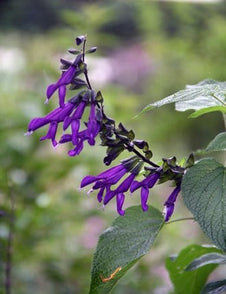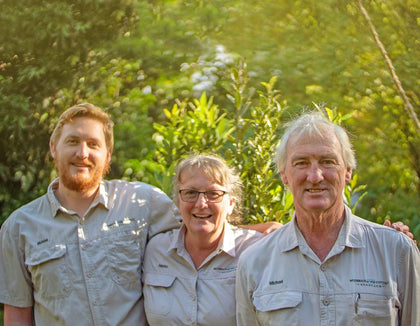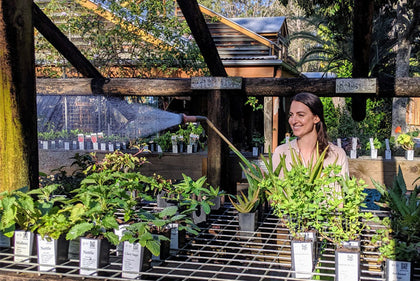





Salvia 'Purple Majesty'
Salvia 'Purple Majesty'
- In stock, ready to ship
- Inventory on the way

Usually available: All year
Life cycle: Perennial
Height: 1 - 1.3m
Position: Sun / part shade
Soil preference: Well drained
This is how we pack and send your Herb Plants to all states except TAS & WA
You will receive
- 1 Salvia Purple Majesty Herb Plant in a 50 X 75mm tube - General growing instructions
All of our Herb Plants are grown organically with certified organic potting mixes and fertilizers
Botanical Name:
Salvia Purple Majesty is an open growing shrub like salvia with a free branching habit. It may grow 1-1.3 in height, with a spread of 50cm, taking from 2-5 years to reach full size. The 2.5-5 cm tubular and hooded flowers are a rich shade of purple and appear in late spring until the end of autumn. They are held in loose spikes and the flowers all face in one direction. The calyces are a dark purple with white and green markings. The mid to light green leaves are heart shaped and set in alternate pairs.
The parent plants of Purple Majesty are thought to be S. guarantica (Anise Scented) and S. gesneriiflora (Tequila or Scarlet Sage). This salvia is often mistaken for salvia Black Knight, which is a larger plant. If Black Knight is too big for your garden, Purple Majesty might be the better choice.
Growing Conditions
Purple Majesty will tolerate partial shade and in hotter some regions this may be beneficial. However, generally full sun is preferred for the best growth. Like many salvias, Purple Majesty does not like wet feet, so excessive moisture should be avoided by planting in well drained soil. It may also need protection from frosty conditions. Most soil types are suitable for this saliva.
Due to the free growing habit of Purple Majesty, the plant may need support from other plants or loose staking. This may be more important in windy conditions, but this salvia does benefit from being in a sheltered position. The flowers appear from November through to April in the different regions of Australia.
In winter the plant can be pruned hard and simply tidied up at other times of the year. Softwood cuttings taken in spring can be used for propagation. Although it is referred to as a clumping plant, this salvia does not have tubers or spreading root systems.
The salvia family has over 900 members with an extensive history as culinary, medicinal and ornamental plants. Ornamental salvias have become collectorsí items, as gardeners try to find a place in their garden for each and every one. There are salvias that will suit every type of soil and climate. More information on the Salvia genus and Common Sage (Salvia officinalis) may be found on our Common Sage page.
All information provided on this website is for informational purposes only. Please seek professional advice before commencing any treatment.





